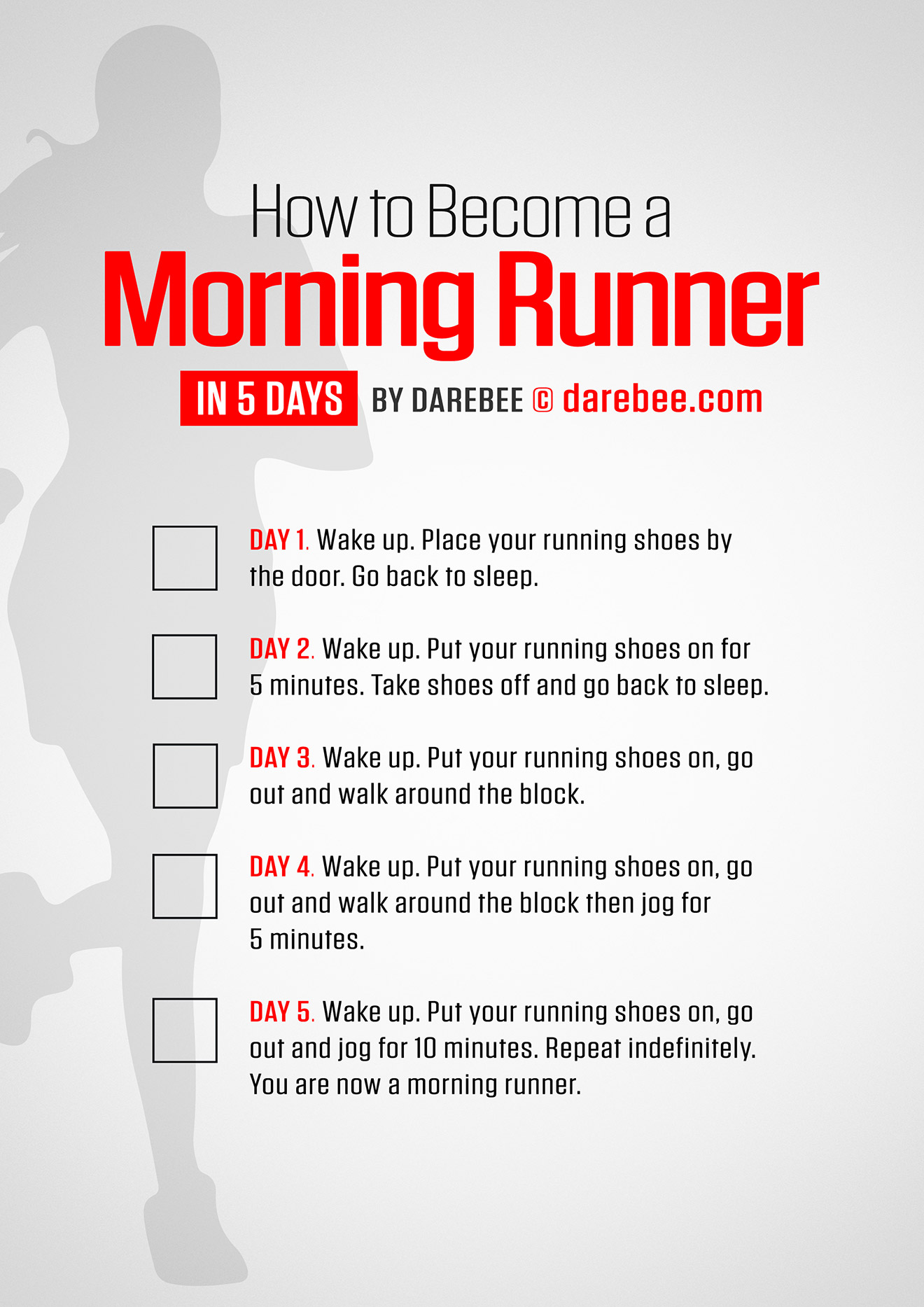Those of you who actively use micro-workouts to maintain your fitness, already understand that incremental improvements require more structure but less energy to achieve and still deliver the fitness results you are looking for.
The ‘catch’ in the approach is time. While your body and mind respond to the pressure being applied the adaptations take longer to kick in and are slower to deliver results. Having said that, there are good reasons for putting in place a more structured approach to your running routine that gives you more time to adjust.
Some of these reasons can be:
- A complicated life
- Long time off fitness
- A lay-off due to injury
- Needing time to adjust to a fitness routine
The list is far from exhaustive.
The point is that it is always easier to incrementally change your habits and put in new ones that help you get fitter and healthier than to try and implement a massive change. Understand that everything takes energy.[1] Your fitness routine, in order to stick, will require energy supplied by the brain which will sustain your motivation from one day to the next.[2] If that energy requirement is too high because the change you have put in place is too massive and requires too much adjustment to become accustomed to it also means it will need even more energy to sustain.[3]
This is why, usually, we fail at our resolutions despite our best intentions. We try to do too much, too fast.
Become A Morning Runner With This Hack
Running is no exception. As a matter of fact, because most running takes place outside and we are made to respond to the environment around us[4] our brain and body has to deal with even more sensory input. In the summer it’s too hot. In the winter, it’s too cold. There is sunlight, wind and rain to deal with. All of this takes extra amounts of energy to cope with.
It’s no wonder we find it so difficult.
Yet, by applying the science of incremental change to our task we become accustomed to the energy demands so that they do not overwhelm us. This means that the task of getting out of a warm bed in the morning, lacing up our running shoes and hitting the road becomes easier because we no longer perceive the change to be so large.
The five steps required to make this hack work are:
Day 1. Wake up. Place your running shoes by the door. Go back to sleep.Day 2. Wake up. Put your running shoes on for five minutes. Take shoes off and go back to sleep.
Day 3. Wake up. Put your running shoes on, go out and walk around the block.
Day 4. Wake up. Put your running shoes on, go out and walk around the block then jog for five minutes.
Day 5. Wake up. Put your running shoes on, go out and jog for 10 minutes. Repeat indefinitely. You are now a morning runner.
Research
- Raichle ME. The restless brain. Brain Connect. 2011;1(1):3-12. doi: 10.1089/brain.2011.0019. PMID: 22432951; PMCID: PMC3621343.
- Raichle ME. Two views of brain function. Trends Cogn Sci. 2010 Apr;14(4):180-90. doi: 10.1016/j.tics.2010.01.008. Epub 2010 Mar 4. PMID: 20206576.
- Raichle ME. The brain's default mode network. Annu Rev Neurosci. 2015 Jul 8;38:433-47. doi: 10.1146/annurev-neuro-071013-014030. Epub 2015 May 4. PMID: 25938726.
- Marshall N. A., Thiault L., Beeden A., Beeden R., Benham C., Curnock M. I., Diedrich A., Gurney G. G., Jones L., Marshall P. A., Nakamura N., Pert P. Our Environmental Value Orientations Influence How We Respond to Climate Change. Frontiers in Psychology. Vol 10. 2019, pp938, doi: 10.3389/fpsyg.2019.00938.
Instructions: Print out the poster, hang it on the door and tick off completed days.









